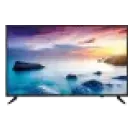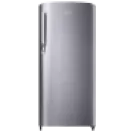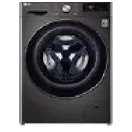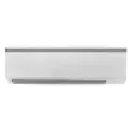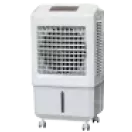When it comes to choosing between sine wave and square wave inverters, understanding their functionalities is key. Sine wave inverters produce a smooth and continuous waveform, closely resembling the power supplied by your utility provider. This makes them suitable for a wide range of electrical appliances, including sensitive devices like computers, televisions, and medical equipment. They operate more efficiently and produce less electrical noise, ensuring your appliances work optimally.
In contrast, square wave inverters generate a more abrupt waveform, which can cause problems for sensitive electronics. While they are generally cheaper and simpler in design, they are not suitable for all devices. Square wave inverters can power simple equipment like fans and lights but may not function effectively with more complex appliances. Ultimately, the choice between these two types of
inverters depends on your specific needs, budget, and the devices you intend to power.
Key differences between sine wave and square wave
| Feature | Sine wave inverter | Square wave inverter |
| Waveform | Smooth, continuous wave that mimics utility power. | Abrupt waveform that can cause distortion. |
| Suitability for appliances | Ideal for sensitive electronics like computers and TVs. | Suitable for basic appliances like fans and lights. |
| Efficiency | More energy-efficient, resulting in lower electricity costs. | Less efficient, may lead to higher energy consumption. |
| Noise level | Produces less electrical noise, providing quieter operation. | Generates more electrical noise, which can affect devices. |
Maximise your energy savings with
hybrid solar inverters, allowing you to use solar energy during the day and draw from the grid at night.
Sine wave vs square wave inverters: Performance and usage comparison
| Feature | Sine wave inverter | Square wave inverter |
| Waveform output | Smooth, continuous sine wave | Abrupt, square-shaped wave |
| Performance | High efficiency with sensitive and high-end appliances | Lower efficiency, suitable for basic appliances |
| Power quality | Provides stable and clean power, similar to grid power | Can cause distortion and noise in devices |
| Compatibility | Compatible with all types of electrical appliances, including delicate ones like computers, air conditioners, and microwaves | Only suitable for simple devices like fans, lights, and older machines |
When comparing the performance and usage of sine wave and square wave inverters, several factors come into play. Sine wave inverters deliver a steady and clean power output, making them perfect for powering sensitive electronics such as laptops, televisions, and medical devices. They ensure that these devices operate without interruptions or potential damage, which is crucial for performance and longevity. This reliability makes sine wave inverters a popular choice for households and businesses that rely on sensitive equipment.
On the other hand,
square wave inverters can power basic appliances, such as lights and fans, but may not provide the same level of performance for more complex devices. They are often used in situations where the cost is a primary concern and the need for power quality is minimal. Additionally, square wave inverters can create electrical noise that may disrupt the functioning of sensitive electronics, potentially leading to malfunction or reduced lifespan. Therefore, while square wave inverters are more affordable, they may not be the best option for users who rely on sensitive devices.
When choosing an inverter, consider the types of appliances you plan to use. If your household contains high-end electronics, investing in a
sine wave inverter is a wise choice. For those with simpler needs, a square wave inverter may suffice. Always evaluate the performance, energy efficiency, and compatibility of the inverter with your devices before making a decision.
Experience the best of both worlds with
hybrid inverters, seamlessly integrating solar power and grid energy for efficient and reliable electricity supply.
Price list of sine wave and square wave inverters in India
| Model name | Price |
| Livguard LGS900i pure sine wave inverter | Rs. 4,925 |
| Livguard LGS1600 pure sine wave inverter | Rs. 9,528 |
| Livguard LG1550i inverter 1250VA/12V | Rs. 7,000 |
| Livguard LG1150iStar square wave inverter | Rs. 5,369 |
Disclaimer: The features, availability, and pricing of each model are subject to change and may vary. For the most accurate and up to date information, please visit the official website.
Financing options with Bajaj Finserv
Bajaj Mall offers a seamless experience for exploring inverters. You can browse through a variety of inverters, assessing their features and specifications to make an informed choice. Once you've gathered all the information, head to a Bajaj Finserv partner store to select the inverter that suits your needs. Choose a repayment tenure that fits your budget and enjoy the convenience of Easy EMIs.
Benefits of shopping with the Bajaj Finserv EMI Network Card
- Competitive prices: Bajaj Finserv’s partner stores offer reasonable pricing on inverters, ensuring your purchase remains within your budget. This means you can find quality products without breaking the bank, making it a smart choice for consumers.
- Easy EMIs: With the Bajaj Finserv’s Easy EMI options, buying your desired inverter becomes hassle-free. You can split the cost into manageable monthly payments, making budgeting for your purchase easier.
- Zero down payment: Forget about the hassles of an initial lump sum payment, as select products are available under the zero down payment policy. This allows you to take your inverter home without any upfront cost, making it easier for you to upgrade your power supply.
- Options and accessibility: Shopping for your favourite inverters is more convenient than ever. The Bajaj Finserv EMI Network offers a wide range of inverters at partner stores across multiple cities, ensuring you have plenty of options to choose from.
- Exciting deals and cashback offers: Purchase the inverter you want and unlock special deals and cashback offers. These promotions can further reduce the overall cost of your purchase, enhancing your shopping experience.
- Free home delivery: For added convenience, some inverters come with free home delivery. This service saves you time and effort, allowing you to focus on setting up your new inverter rather than worrying about transportation.
